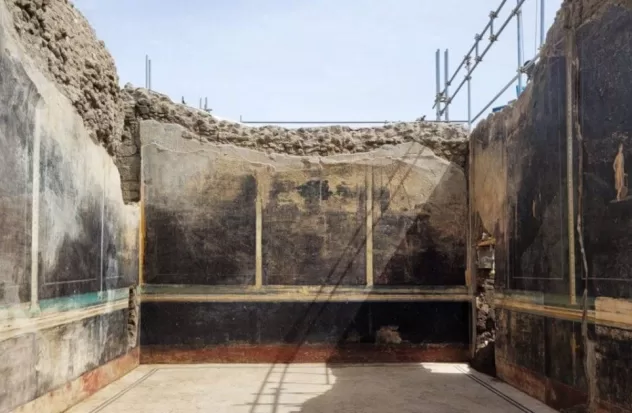MADRID.- A banquet hall with elegant black walls, decorated with mythological characters and themes inspired by the Trojan War, has been recovered in the excavations of Pompeii.
Completely visible in all its splendor, archaeologists believe that the room provided a refined setting for entertaining during moments of conviviality, whether banquets or conversations, with the clear objective of pursuing an elegant lifestyle, reflected in the size of the space, the presence of frescoes and mosaics dating from the Third Style (mural painting that mixes inlay and architectural elements), the artistic quality of the paintings and the choice of characters.
The dominant theme seems to be that of heroism, represented by the representations of pairs of heroes and deities involved in the Trojan War, but also of destiny and, at the same time, the possibility, often untapped, that human beings have. to change their own destiny, reports the Pompeii Archaeological Park.
In addition to Helen and Paris, indicated in a Greek inscription placed between the two figures by her other name “Alexander”, there is the figure of Cassandra, the daughter of Priam, who is represented on the walls of the dining room along with Apollo. In Greek mythology, Cassandra was famous for her gift of foresight and her terrible destiny that prevented her from altering the course of future events. Despite her ability to predict the future, no one believed her due to a curse that Apollo placed on her for refusing to give herself to him, so she was unable to prevent the tragic events of the Trojan War that she had foreseen. After being raped during the taking of Troy, she would end up being Agamemnon’s slave in Mycenae.
The frequent presence of mythological figures in paintings of living rooms and dining rooms in Roman homes had the explicit social function of entertaining guests and diners, providing talking points for conversations and reflections on life.
The room is about fifteen meters long and six meters wide and opens onto a patio that appears to be an open-topped entrance room with a long undecorated staircase leading to the first floor.
Under the arches of the staircase was a huge pile of construction materials that had been set aside. Someone had drawn with charcoal two pairs of gladiators and what appears to be a huge stylized phallus on the fresh plaster of the arches of the grand staircase.
The excavation is part of a larger project aimed at shoring up the perimeter front between the excavated and unexcavated areas of Pompeii, and improving the hydrogeological structure, with the aim of making the city’s vast heritage, covered by the ash of the Vesuvius in the year 79 of our era, (more than 13,000 rooms in 1,070 residential units, in addition to public and sacred spaces) more efficient and sustainable.
Source: EUROPA PRESS


